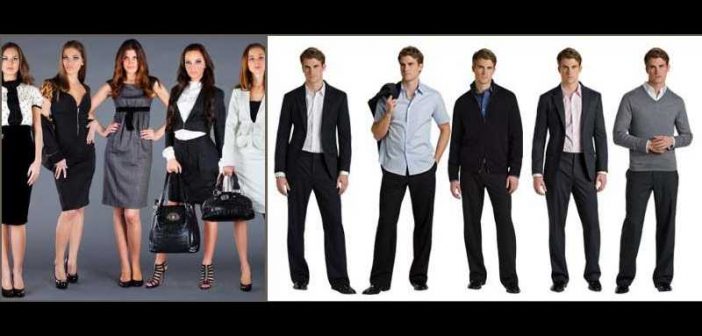Formal office wear has been giving way to a more casual look for some time now as the workforce gets younger and prefers comfortable and informal wear. Where do the companies or employees draw the line?
Global financial services firm JP Morgan Chase has relaxed the norms to the extent of allowing employees other than those at its investment bank to wear business-casual clothing.
Similarly, Walmart now allows its Associates to wear denim. Accenture and PwC have employees decide for themselves with “Dress for Your Day” policies.
PwC’s people innovation leader Anne Donovan says it depends entirely on whether the employee is in the office or his appointments with clients or managers. If there is a meeting scheduled with the CEO, a suit is required. However, the firm draws the line at flip-flops and shorts.
She says firms are increasingly tending to be more accommodative towards the employees’ preference for comfortable clothes, especially while looking to retain talent.
While not explicitly banning any specific form of attire, Accenture advises staff to take care of factors like T-shirt slogans that may create a negative impression.
The rise of start-ups that often promotes disrupting technologies to earn their market share also speeded up the move towards informal clothing. Hoodies and fancy sneakers are the norm in most of these setups.
The pickup in demand has led to Betabrand designs, itself a startup, come up with yoga pants specifically for the office.
Staffing firm OfficeTeam that conducted a survey of more than 300 senior managers recently found that half of them wear less formal clothing than they did five years ago.
The move towards casual wear at the workplace that began almost a century ago gathered steam in recent years with the fast fashion, a phenomenon in the fashion industry whereby production processes are expedited in order to get new trends to the market as quickly and cheaply as possible, and new clothing choices.
It also has to do with the emergence of a middle class and disappearance of many social rules and social classes, according to Francois Kress, chief executive officer of fashion label Carolina Herrera.
This firm has 30% of its ready-to-wear sales in daywear separates, versus 70% in occasion or evening wear. A few years ago the balance would have been 10-90%. In the near future it’s likely to be 50-50, Kress says.
Sale of activewear has been increasing by leaps and bounds for the past three years. These stretch fabrics, used for exercise, are increasingly becoming everyday work clothes. Luxury brands are launching activewear lines, such as the collaboration between Stella McCartney and Adidas and the recently announced partnership between Givenchy and Nike. (Image Courtesy: Pinterest)




